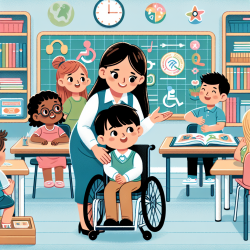Introduction
In the ever-evolving landscape of education and community support, the concept of 'community resilience' stands as a beacon of hope and empowerment. As practitioners, understanding and implementing the core elements of community resilience can significantly enhance our ability to support students, families, and communities in the face of adversity. The research article, What Do We Mean by 'Community Resilience'? A Systematic Literature Review of How It Is Defined in the Literature, offers valuable insights into these core elements, which can be instrumental in guiding our practices.
Understanding Community Resilience
The research identifies nine core elements that define community resilience: local knowledge, community networks and relationships, communication, health, governance and leadership, resources, economic investment, preparedness, and mental outlook. Each element plays a crucial role in building a resilient community, capable of withstanding and recovering from disasters.
Implementing Resilience in Practice
As practitioners, we can integrate these elements into our daily practices to enhance community resilience:
- Local Knowledge: Encourage community members to share their experiences and insights, fostering a culture of learning and preparedness.
- Community Networks and Relationships: Build strong networks among stakeholders, including educators, parents, and community leaders, to create a supportive environment.
- Communication: Develop effective communication strategies to ensure clear and timely information dissemination during crises.
- Health: Advocate for accessible health services and support mental health initiatives to maintain community well-being.
- Governance and Leadership: Promote inclusive leadership and governance structures that reflect the community's needs and aspirations.
- Resources: Identify and mobilize resources, both tangible and intangible, to support community initiatives.
- Economic Investment: Encourage economic development and investment to strengthen the community's financial resilience.
- Preparedness: Engage in proactive planning and risk assessment to mitigate potential disasters.
- Mental Outlook: Foster a positive mental outlook by promoting hope, adaptability, and resilience among community members.
Encouraging Further Research
While the article provides a comprehensive overview of community resilience, it also highlights the need for further research to refine these elements and explore their interconnections. Practitioners are encouraged to delve deeper into specific areas of interest, such as economic processes, social networks, and effective preparedness activities, to enhance their understanding and application of community resilience.
Conclusion
By embracing the core elements of community resilience, practitioners can play a pivotal role in empowering communities to thrive amidst challenges. The journey toward resilience is ongoing, and continuous learning and adaptation are key. To read the original research paper, please follow this link: What Do We Mean by 'Community Resilience'? A Systematic Literature Review of How It Is Defined in the Literature.










